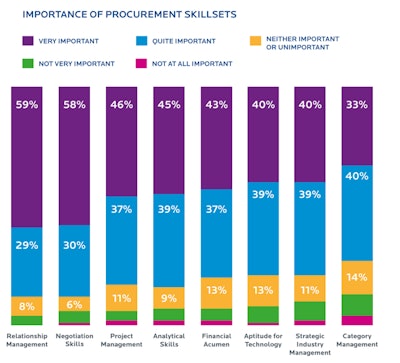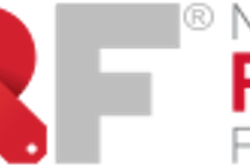
London and Chicago—Sept. 30, 2015—Xchanging plc, a business technology and services provider, issued the third set of results from its 2015 Global Procurement Study, focused on how technology is transforming procurement. The study is a major international project that surveyed 830 procurement decision-makers across the UK, Europe and North America.
Technology Adoption
Savings tracking (77 percent) and spend analytics (76 percent) technologies are the most widely implemented, in the context of a tough economic climate in which spending cuts and streamlined processes remain top priorities for businesses.
This mirrors respondents’ answers about the key performance indicators (KPIs) on which their procurement functions are measured—the top four all being cost related (47 percent cite cost savings realized as their most important KPI, 19 percent cite revenue impact, 16 percent cite cost savings identified and 14 percent cite cost avoidance).
Over half of companies questioned also already have automation (68 percent), reporting dashboards (68 percent), contract management (67 percent), supplier performance management (64 percent), market intelligence (60 percent), e-sourcing (59 percent), predictive analytics (54 percent) and Internet of Things (54 percent) technologies in place.
In general, the organizations most likely to have the above solutions in place were:
- In the U.S.
- Larger, with 3,000 or more employees.
- In retail, consumer goods or manufacturing industries.
- Those that outsource parts of their procurement operations.
U.S. companies are 8 percent more likely to have all of the listed technologies in place than those in mainland Europe.
Overall, supplier performance management software and predictive analytics are the technology solutions most likely to be implemented in the next two years (both cited by 12 percent of respondents), whereas 46 percent claimed they are unlikely to ever implement online auctions.
Investment Priorities
The top priority technology investments for procurement decision-makers are process enhancement (cited by 28 percent), followed by automation (24 percent) and talent development (22 percent).
These will presumably be to address the capacity issues faced by the function: 80 percent of respondents identified procurement team time pressures as a challenge and 20 percent as a major challenge. Technology that automates and enhances processes will ease the pressures and demands currently placed on procurement manpower.
Companies with decentralized procurement operations were more likely to consider process enhancement a top investment priority (32 percent) than those with centralized operations (25 percent).
Technology Impact
Predictive analytics and the Internet of Things (IoT) are expected to be the most revolutionary technologies for supply chain operations, with eight in 10 respondents (80 and 79 percent, respectively) stating they will have an impact, and nearly a quarter (23 percent and 24 percent) expecting them to have a major impact.
A report issued by DHL and Cisco in April this year estimated that, by 2020, 50 billion devices will be connected to the Internet—an increase of more than 300 percent from today's 15 billion—and that IoT will generate $1.9 trillion across the supply chain and logistics operations industry, with warehousing and freight benefitting the most.
Technology and Procurement Skillsets
Despite the growing importance of technology within the supply chain, aptitude for technology was surprisingly only ranked as the sixth most important skill and just 17 percent claimed there was a technology skills gap in their procurement department.
These statements also contradict the fact that talent development was cited as the third most important technology investment priority (as outlined earlier). This suggests that when procurement professionals look at technology as a whole, they recognize the importance of developing talent and skills in this area for successful implementation. Yet when they look at the desired skills of the procurement function in isolation, an aptitude for technology is overlooked.
Luke Spikes, Xchanging’s procurement technology spokesperson, provides the following insights on the research:
High Technology Adoption Rates
“When analyzing the data, it is key that we consider how technology is being interpreted by respondents. It’s surprising that over half of all companies surveyed said they already have the majority of the listed technology solutions.
“A notable 76 percent reported having spend analytics technology, but we need to question what technology they are actually using. Are they really utilizing a solution that analyzes all spend data—how much is spent, on what, with whom and by whom—and transforms this data into actionable business intelligence? Or are they simply using Excel spreadsheets?
“It’s also important to note that there is a big difference between having the technologies in place and using them to their full advantage, to enhance performance and improve the bottom line. There needs to be a drive on education around technology applications for them to deliver real benefits.”
IoT, Predictive Analytics and Future Technologies
“The supply chain landscape is increasingly global, and IoT can enable businesses to track the exact whereabouts and the condition of goods in transit, automatically monitor inventory levels to manage cash flow more efficiently, and remove human error from the process.
“Predictive analytics will drive a far more strategic approach to sourcing—for example, enabling hedging on the price of raw materials to become a daily part of the procurement process—as well as creating further opportunities for automation to increase accuracy and efficiency.
“Procurement leaders ignore technology-driven progress at their peril. If they don’t seize the opportunity, they will quickly fall behind their competitors. The adoption of new technologies—alongside a continued focus on the value and expertise of procurement professionals—will ensure the function remains a strategic, indispensable part of their organization.”



















